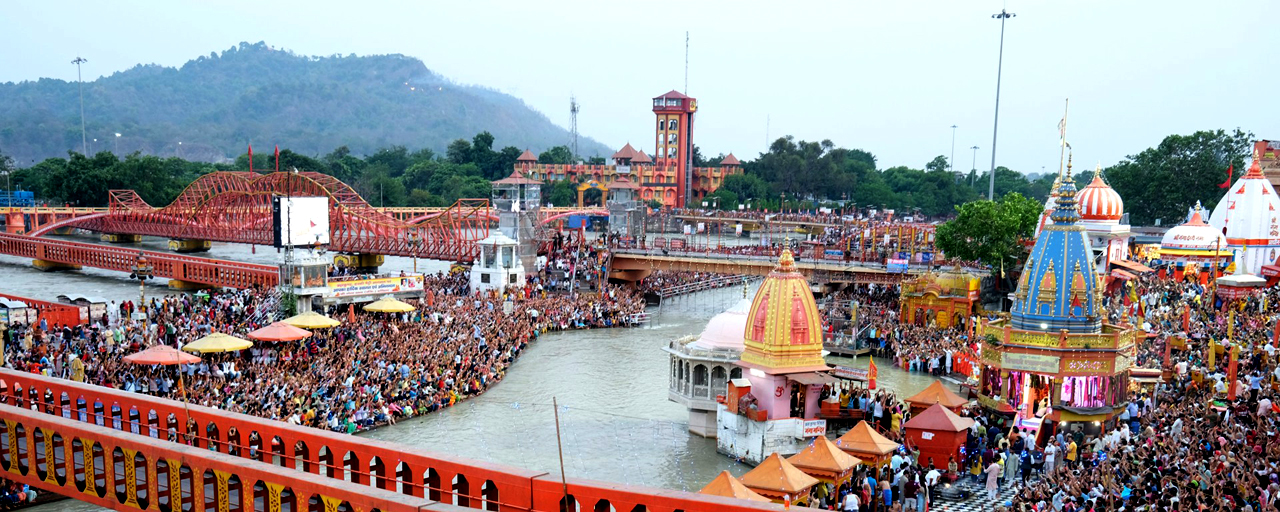An Overview
The Kanwar Yatra is a significant annual Hindu pilgrimage undertaken by the devotees of Lord Shiva, predominantly in the northern states of India. It holds both religious and cultural importance and is one of the largest mass religious gatherings in the country.
1. What is the Kanwar Yatra?
- The Kanwar Yatra is a journey where Kanwariyas (devotees) travel to fetch the sacred Ganga Jal (holy water of the River Ganga) from places like Haridwar, Gaumukh, or Sultanganj, and then carry it back to their hometowns.
- They offer this water to Lord Shiva, particularly at local Shiva temples, during the auspicious month of Shravan (July-August).
- The ritual culminates in pouring the water on Shiva Linga, often on Shivratri of the Shravan month.
2. Who are the Kanwariyas?
Mostly young male devotees, but in recent years, women and elderly have also started participating.
Many walk barefoot, covering distances ranging from 100 km to 250 km.
They wear saffron clothes, chant “Bol Bam” or “Har Har Mahadev”, and carry the water in a Kanwar — a bamboo pole with water-filled pots on both sides.
3. Key Locations Involved
- Haridwar, Rishikesh (Uttarakhand)
- Sultanganj (Bihar)
- Gangotri, Gaumukh
- The water is usually offered at:
- Kashi Vishwanath Temple (Varanasi)
- Baijnath Dham (Jharkhand)
- Neelkanth Mahadev (Uttarakhand)
- Deoghar (Baba Dham)
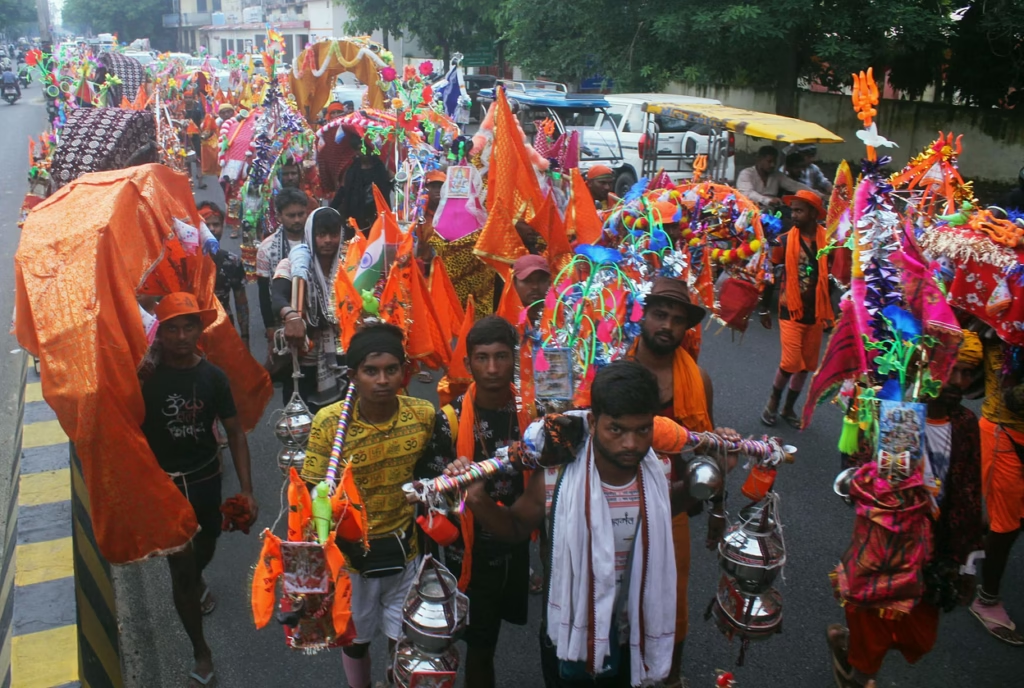
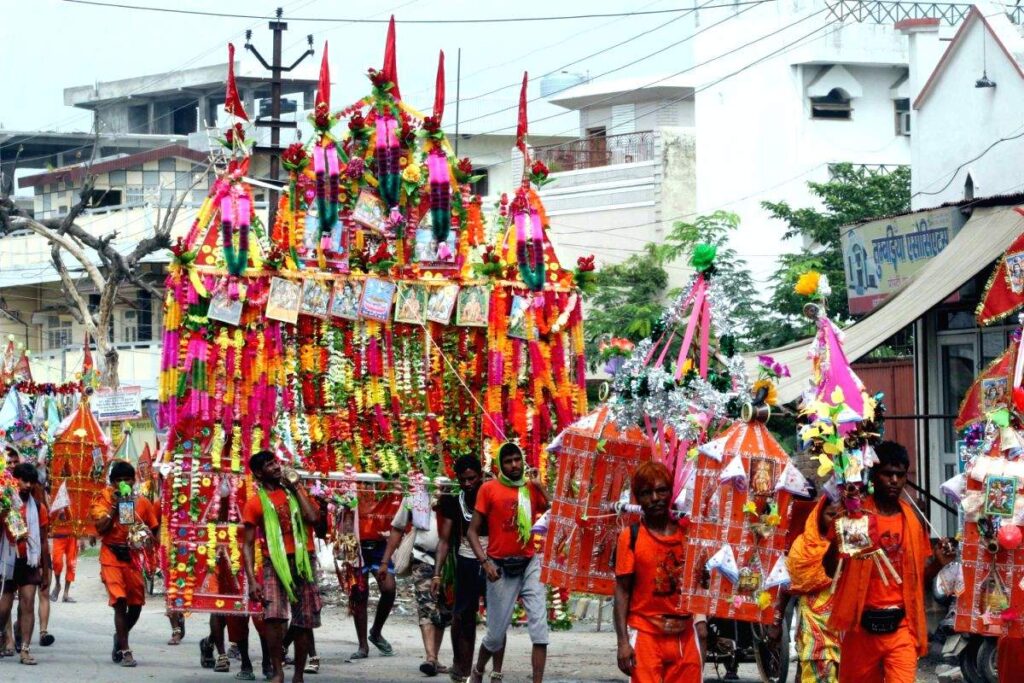
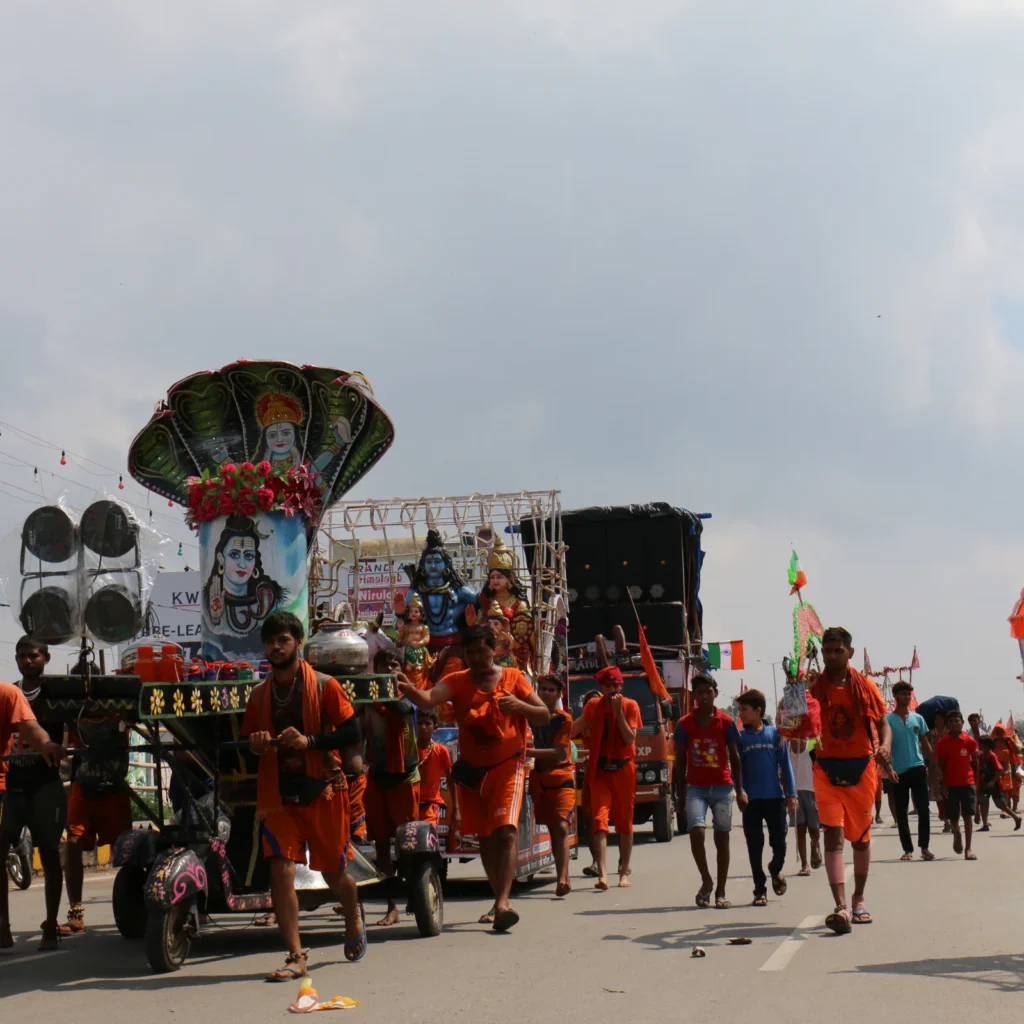
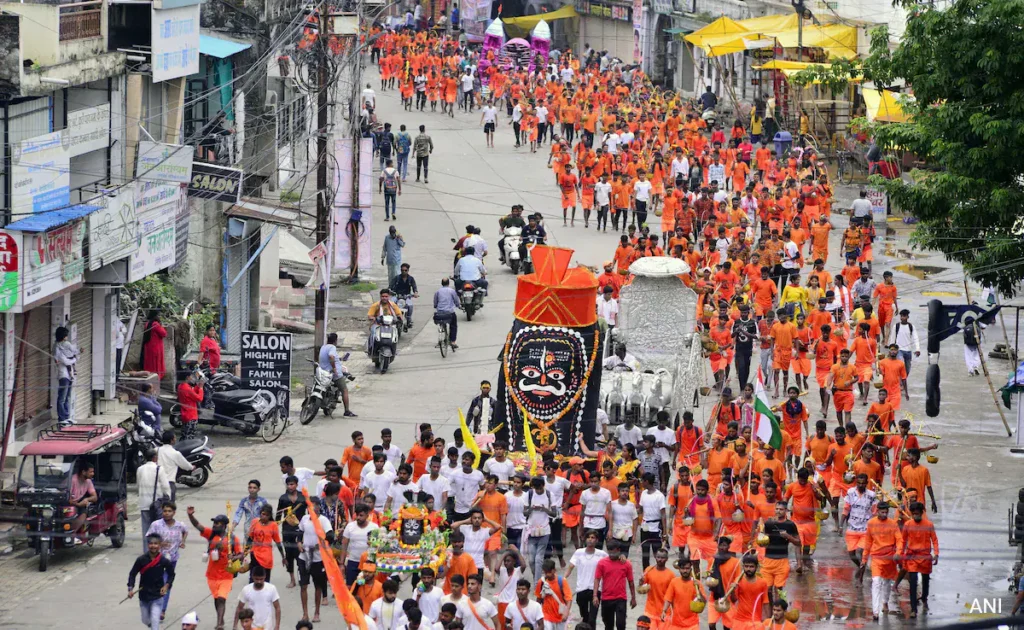
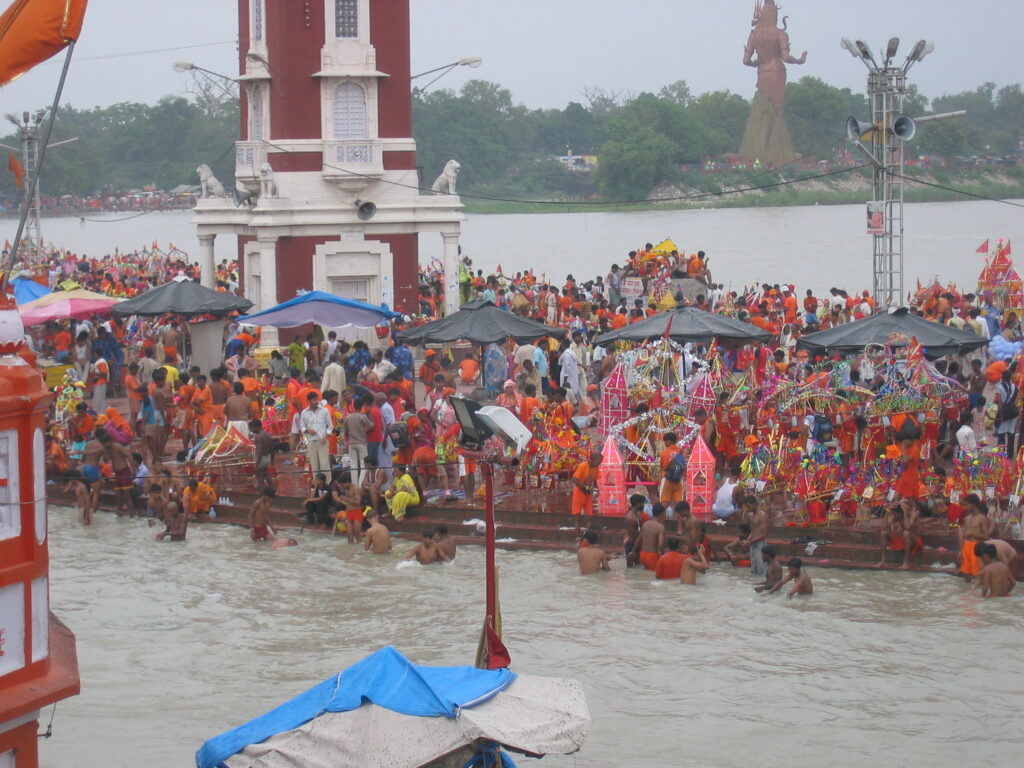
4. Cultural and Religious Significance
- Rooted in Shaivism; it is a display of devotion and physical endurance.
- It is believed that this act pleases Lord Shiva, especially in the month of Shravan, which is associated with Samudra Manthan and the intake of poison (halahala) by Shiva.
- The ritual is seen as a form of penance and purification.
5. Administrative and Social Aspects
Massive public mobilization: Crores of people participate, leading to a large-scale movement.
Security and logistics: State governments, especially in Uttar Pradesh, Uttarakhand, Delhi, Bihar, deploy police, set up temporary camps, and ensure water and medical facilities.
Challenges:
- Traffic disruption on highways.
- Occasional clashes, particularly when sound systems or roadblocks become controversial.
- Environmental concerns due to plastic and waste.
6. Recent Trends
• Digital coordination via social media and mobile apps.
• Increasing participation of women and youth.
• Use of vehicles and decorated trucks in some areas, though traditionalists prefer walking.
7. Criticisms and Debates
• Noise pollution and law and order issues in some areas. • Environmental impact due to littering. • Concerns over militarization of devotion when groups turn aggressive.
Conclusion
The Kanwar Yatra is a vibrant display of devotion, endurance, and faith, deeply embedded in the religious fabric of India. While it symbolizes spiritual commitment, its scale and intensity demand careful planning, civic responsibility, and inclusive management to ensure a balance between religious freedom and public order.

